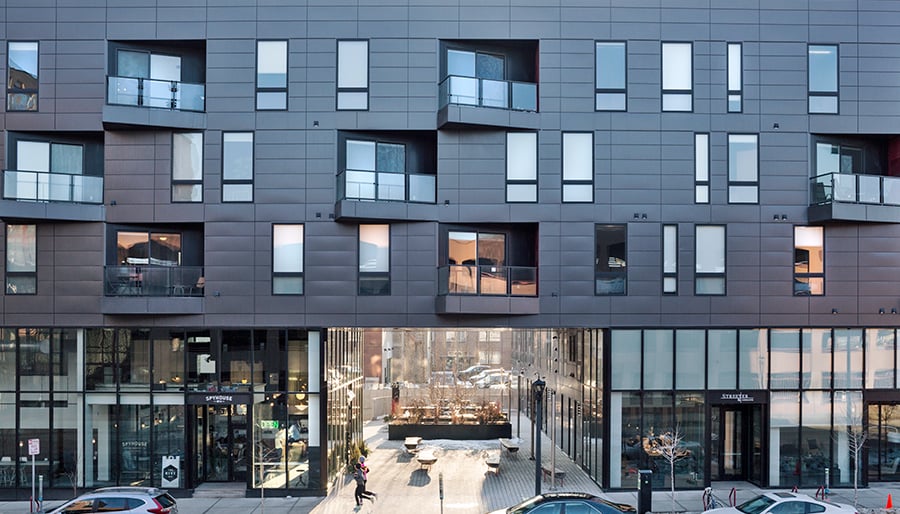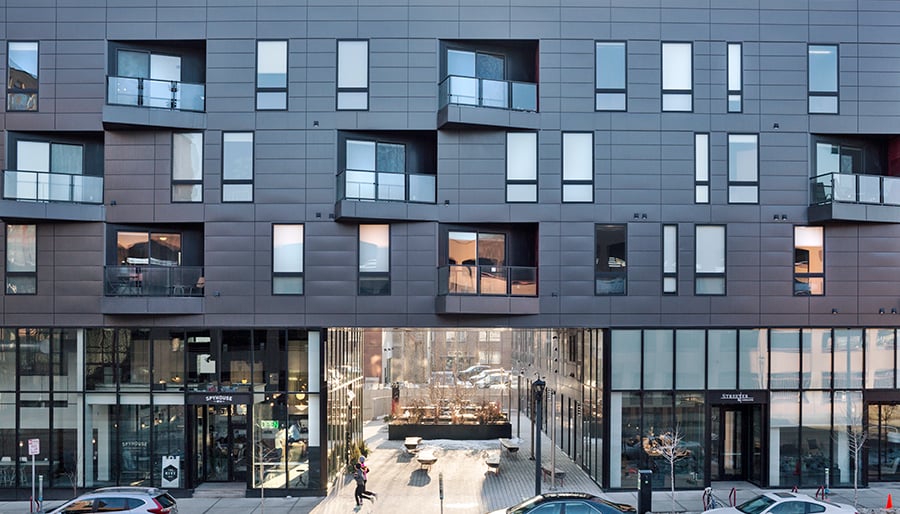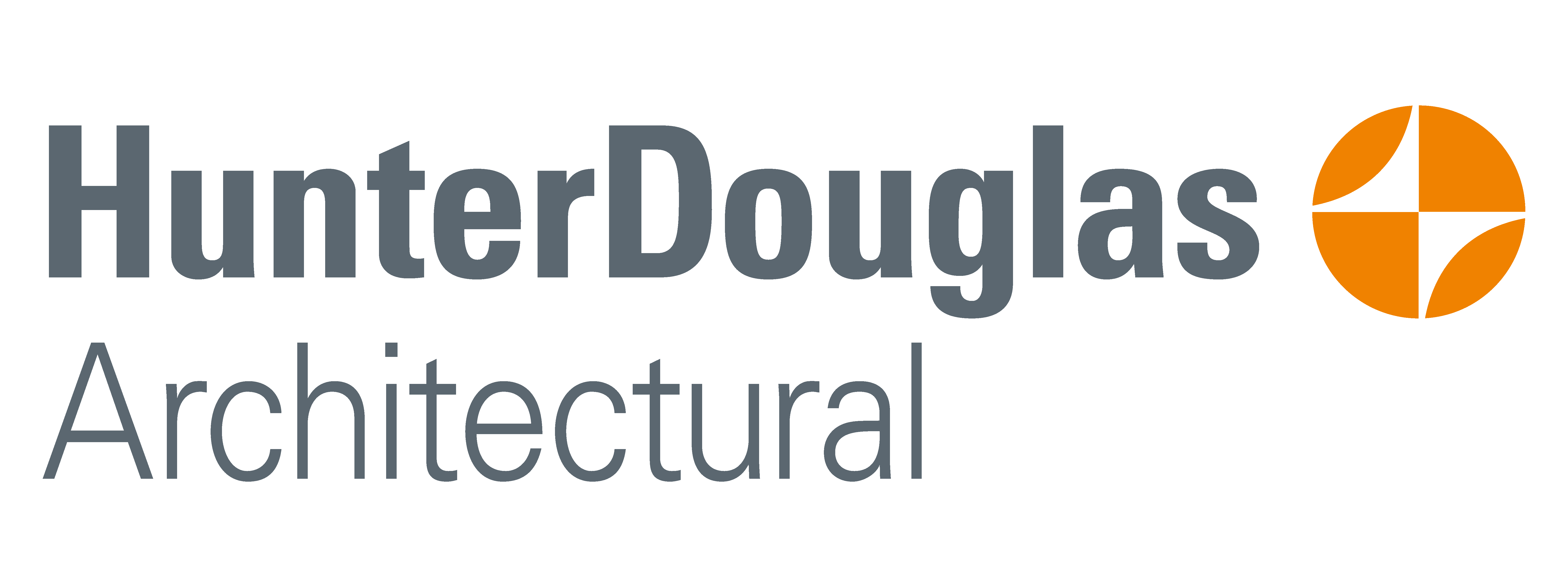
June 21, 2018
VIDEO: “Architecture Is Experiencing a Relevance Revolution,” Says 2018 AIA President Carl Elefante
Elefante spoke to Metropolis about the Conference on Architecture in New York City, which is exploring the many challenges and opportunities facing the architecture profession.
Starting on June 21st, some 23,000 architects will flock to the Javits Center to discuss every relevant aspect of their profession, from thermal bridge detailing to the future of cities across the world. 2018 has already been an eventful year, with devastating storms highlighting the challenges of climate change and workplace sexual harassment allegations forcing practitioners to reevaluate norms and values. The conference is officially themed “Blueprint for Better Cities,” with sessions and keynotes focusing on the world’s urban future. Metropolis sat down with 2018 AIA president Carl Elefante to discuss the diverse challenges—and opportunities—facing architects across the U.S.
Zachary Edelson: This conference is a unique opportunity for the profession to reflect on itself. Given that, why “Blueprint for Better Cities”?
Carl Elefante: The conference is essentially proclaiming the dawning of the urban era and a relevance revolution in architecture. This isn’t just something that the architects have made up. It’s actually brought to us by the world community; maybe the best demonstrations of that are the new urban agenda at the 2016 United Nations Habitat III summit and the Paris Agreement on climate change. So we have two really broad international mandates that say what architects do matters to the lives of people.
Furthermore, if you simply look at cities, the human need is where it’s underdeveloped and people are underrepresented. We’re at a juncture of confronting social and economic equity issues. All the arrows are pointing in the same direction: They’re saying social awareness and social entrepreneurship for architects is really our future. It’s what our profession is being called to do.
Does that mean architects need to more active politically?
The development of cities is a political act. There are many, many stakeholders, and the politics are taking competing stakeholder concerns and finding the common good. So, architecture definitely has a community dimension and I think that’s one of the real important characteristics of 21st Century architecture.
Architects are also very privileged people. We are highly educated. We’re in a wonderful profession and it’s just a delight every morning to wake up and be an architect. But we have a responsibility that comes with that, to be engaged and to be in the political realm. A lot of people that say, “Don’t be political.” But I think what they really mean is don’t be partisan.
Ultimately, architects need to understand how their part of the solution, not the problem. A lot of that’s educational—helping our members understand that—and that’s what the 2018 conference is all about.

How will that theme be reflected in the keynotes?
We’re going to start with Sarah Williams Goldhagen, a former Harvard professor and writer who’s talking about the science of the environment. How does the environment shape us as people? The answer is “profoundly” and she’s just incredible. Then a lot of the other speakers, like AIA Gold Medalist James Polshek, Minneapolis firm Snow Kreilich, and architect Tamara Eagle Bull, will give dimension to that idea.
Then Sheela Søgaard, who works for BIG, and Sir David Adjaye don’t just do fantastic architectural work; they’re also great models of 21st century architects. For example, Adjaye did the new NMAAHC with J. Max Bond Jr. and Phil Freelon. It’s collaborative. It’s about finding a common vision, creating consensus, and focusing on the cultural significance of what we do. And what better example than that amazing building. With Bjarke Ingels Group, they’re all about collaboration. What Sheela has done for that firm is to help them understand how to create a business model that supports collaboration. It supports creativity and social awareness as drivers.
Speaking of evolving models of practice, the allegations surrounding Richard Meier have spurred an intense discussion about architectural pedagogy, workplaces, and awards. How will the conference serve as a venue for that discussion?
I’m glad you asked that. It’s certainly a really important topic for the profession because architecture is experiencing a profound generational change. The Boomers are going. Bye. The Millennials are coming in, and if you look at the demographic chart, it looks like a dromedary: two big humps. The Boomers are going and the Millennials are moving into the center of the diagram. So these issues related to firm culture and equity, they’re absolutely existential issues. We will not make that transition if we don’t make this profession a great place for people to come to work.
Moreover, when we’re sitting in conference, it will be almost exactly the 50th anniversary of when Whitney M. Young, Jr. came to the AIA convention in Portland, Oregon, and basically read the riot act to the profession about it’s irrelevance on social issues, particularly civil rights. That resonates to this day.
Clearly we’ve evolved as a profession, and society around us has evolved too, but we’re not done. The conference will provide a lot of opportunities for people to see the work the AIA has been doing, such as the Equity in Architecture Commission and a new AIA Model Harassment Policy, while understanding what firm best practices are. There’ll also be a number of sessions and ad hoc events where you can speak up and participate.
For architects coming from outside the state, what uniquely New York opportunities would you want to call attention to?
One of the amazing things about in New York is that it’s leading almost any topic related to sustainability, resilience, equity, inclusion, and diversity. I think it sets a terrific tone for every single session during this conference. People are going to reference New York City, especially in resiliency. The city has been a world leader ever since the Bloomberg administration really got involved.
The last thing I’ll say is that I hope attendees understand that you can take these wonderful examples home with you, wherever back home might be. You don’t have to be a city of 12 million to have these lessons be relevant. That’s what success for this conference is going to look like to me.
You may also enjoy “8 ‘Hidden’ Architectural Gems to See While You’re In New York for AIA.”
Recent Viewpoints
Viewpoints
Navigating the Path to Net Zero






